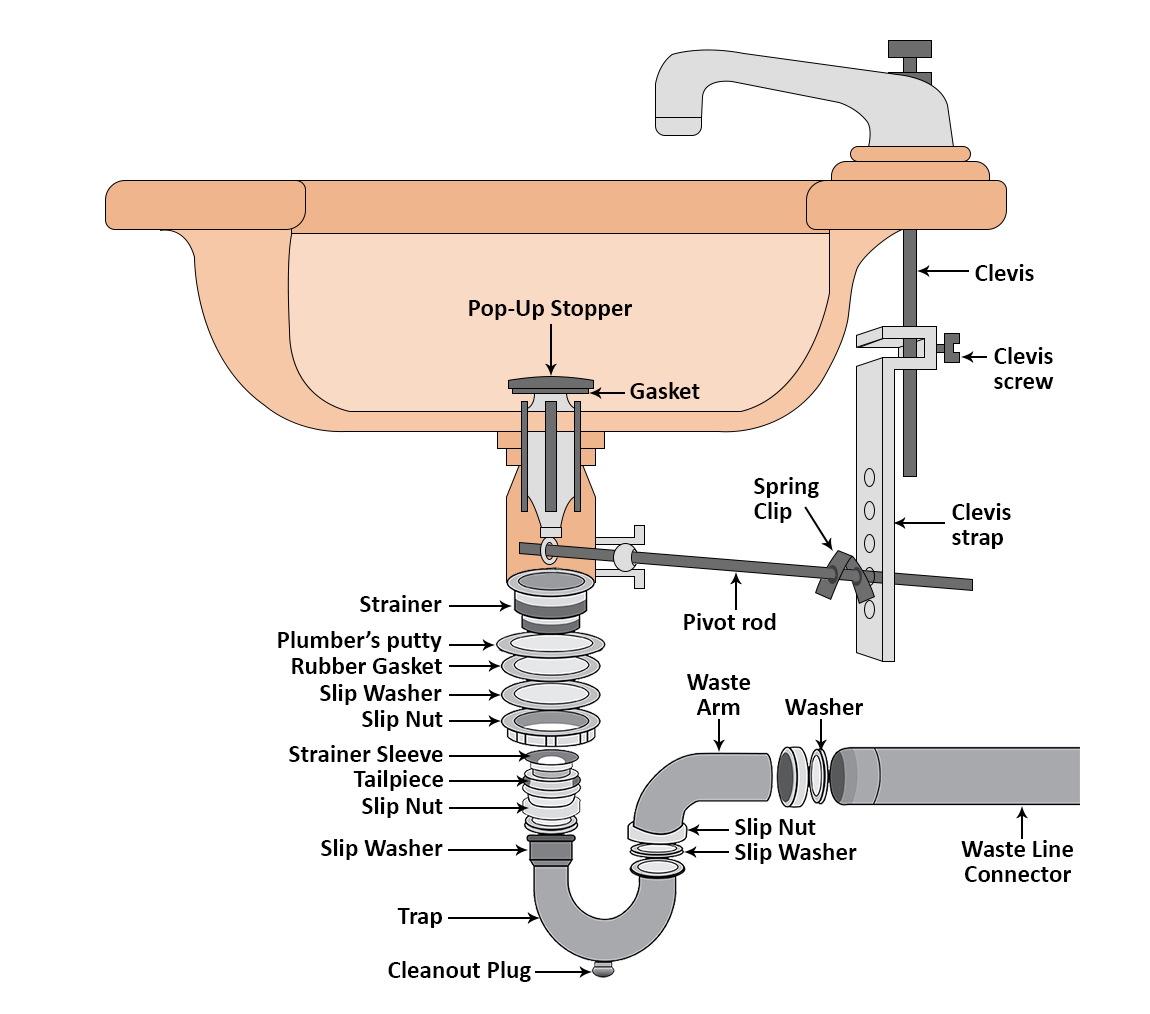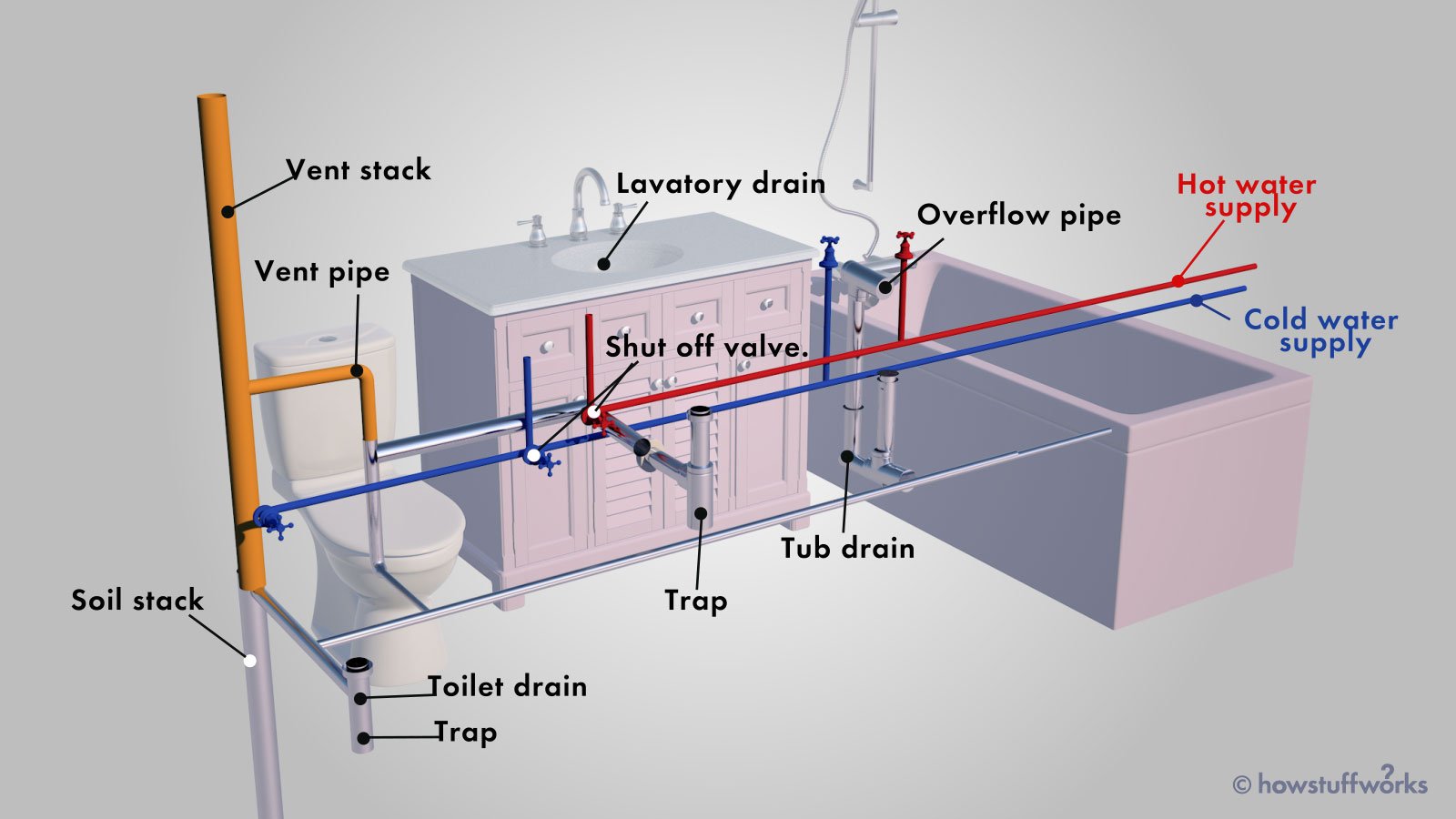Defining Bathroom Fixtures and Fittings: Difference Between Bathroom Fixtures And Fittings

You’re probably wondering, “What’s the difference between fixtures and fittings?” It’s like the difference between the main act and the opening band, but for your bathroom. Fixtures are the big stars, the essential items that make your bathroom functional, while fittings are the supporting cast, adding style and functionality.
Bathroom Fixtures: The Main Event
Bathroom fixtures are the essential components that make a bathroom work. They are typically permanently attached to the plumbing system and are usually made of durable materials like porcelain, ceramic, or stainless steel.
Here are some common bathroom fixtures and their functions:
- Toilet: The toilet is a vital part of any bathroom, used for waste disposal.
- Sink: A sink provides a place to wash your hands and face.
- Bathtub: A bathtub is a large, rectangular container filled with water for bathing.
- Shower: A shower is a fixture that allows you to bathe standing up.
Bathroom Fittings: The Supporting Cast
Bathroom fittings, on the other hand, are the decorative and functional elements that complement the fixtures. They are usually smaller components that are attached to the fixtures or walls. Fittings can be made from a variety of materials, including chrome, brass, nickel, and plastic.
Here are some typical bathroom fittings and their purposes:
- Faucet: A faucet controls the flow of water to the sink, bathtub, or shower.
- Showerhead: A showerhead is attached to the shower arm and dispenses water.
- Drain: A drain allows water to flow out of the sink, bathtub, or shower.
- Toilet seat and lid: These components cover the toilet bowl and provide a comfortable place to sit.
- Towel bars and rings: These fittings provide a place to hang towels.
- Soap dish: A soap dish holds soap.
- Tumbler holder: A tumbler holder keeps your toothbrush and toothpaste organized.
Comparing Fixtures and Fittings
Here’s a table comparing fixtures and fittings based on their characteristics, materials, and installation methods:
| Characteristic | Fixtures | Fittings |
|---|---|---|
| Function | Essential for bathroom functionality | Enhance style and functionality |
| Materials | Durable materials like porcelain, ceramic, or stainless steel | Various materials like chrome, brass, nickel, and plastic |
| Installation | Permanently attached to plumbing system | Attached to fixtures or walls |
Functionality and Purpose

Think of a bathroom as a stage, and fixtures and fittings are the stars! They work together to make your bathroom a functional and stylish space. Fixtures are the big players, like the bathtub or the toilet, while fittings are the supporting cast, like the faucets and towel bars.
Difference between bathroom fixtures and fittings – Fixtures are the big guns, the main attractions that define the bathroom. They’re the things you can’t imagine a bathroom without. Fittings, on the other hand, are the details that add the finishing touches, making your bathroom experience comfortable and enjoyable.
The Roles of Fixtures and Fittings
Fixtures and fittings are like a well-rehearsed team, each playing a crucial role in making your bathroom a functional and enjoyable space.
Fixtures are the stars of the show, providing the essential functions that make a bathroom a bathroom. They’re the big guys that define the space and shape the user experience. Fittings, on the other hand, are the supporting cast, adding the finishing touches that enhance the functionality and aesthetics of the bathroom.
The Interdependence of Fixtures and Fittings
Fixtures and fittings are like two sides of the same coin. They are interdependent, each relying on the other to create a functional and aesthetically pleasing bathroom.
Think about a shower. The shower head (a fitting) is essential for delivering water, but it wouldn’t be very effective without a shower stall (a fixture). Similarly, a bathtub (a fixture) needs a faucet (a fitting) to fill it with water.
Key Features Distinguishing Fixtures from Fittings
The key difference between fixtures and fittings lies in their primary function and impact on the user experience.
- Fixtures are designed to provide essential bathroom functions. They are the core elements of a bathroom and shape the user experience. They are usually fixed in place and are often large and heavy.
- Fittings are designed to enhance the functionality and aesthetics of the bathroom. They are the details that make the bathroom more comfortable and enjoyable to use. They are typically smaller and more portable than fixtures.
Strategic Placement of Fixtures and Fittings
Here’s a hypothetical bathroom layout to illustrate how the strategic placement of fixtures and fittings can optimize functionality:
Imagine a small bathroom with a shower stall in one corner, a toilet in the opposite corner, and a vanity with a sink in the middle. The shower stall is equipped with a shower head, a handheld shower wand, and a shower curtain. The vanity has a mirror, a medicine cabinet, and a single-lever faucet.
The placement of the shower stall, toilet, and vanity ensures efficient use of space and allows for easy movement. The shower head and handheld shower wand provide flexibility for showering, while the shower curtain keeps water from splashing outside the stall. The mirror, medicine cabinet, and faucet on the vanity are positioned for convenient use.
Materials and Design Considerations

Bathroom fixtures and fittings come in a variety of materials, each with its own set of advantages and disadvantages. The choice of material can significantly impact the durability, style, and overall cost of the bathroom. Additionally, the design of these fixtures plays a crucial role in the aesthetics and functionality of the bathroom.
Material Choices and Their Impact
The materials used for bathroom fixtures and fittings influence their durability, aesthetic appeal, and cost. Here are some common materials and their characteristics:
- Ceramic: Ceramic is a popular choice for bathroom fixtures due to its durability, affordability, and ease of cleaning. It’s resistant to scratches and stains, making it a practical option for high-traffic areas. However, ceramic can be prone to chipping or cracking if mishandled.
- Porcelain: Porcelain is a type of ceramic known for its high density and smooth, glossy finish. It’s more expensive than standard ceramic but offers superior durability and scratch resistance. Porcelain is often used for high-end bathroom fixtures.
- Stainless Steel: Stainless steel is a popular material for bathroom fittings due to its durability, resistance to corrosion, and sleek, modern aesthetic. It’s also easy to clean and maintain. However, stainless steel can be prone to fingerprints and scratches.
- Brass: Brass is a durable and aesthetically pleasing material often used for bathroom fixtures and fittings. It can be polished to a high shine or given a more rustic finish. Brass is also resistant to corrosion, making it a good choice for humid environments.
- Chrome: Chrome is a popular finish for bathroom fixtures and fittings due to its sleek, modern appearance and durability. It’s also easy to clean and maintain. However, chrome can be prone to scratches and water spots.
- Nickel: Nickel is another durable and corrosion-resistant material often used for bathroom fittings. It can be polished to a high shine or given a more brushed finish. Nickel is known for its warm, subtle appearance.
Aesthetic Considerations in Bathroom Design
The design of bathroom fixtures and fittings can significantly impact the overall aesthetic of the bathroom. Here are some key considerations:
- Style: Bathroom fixtures and fittings can be designed in a variety of styles, from traditional to contemporary. The style should complement the overall design of the bathroom and reflect the homeowner’s personal preferences.
- Color: The color of bathroom fixtures and fittings can impact the mood and feel of the bathroom. Neutral colors like white, black, and gray are popular choices, while bolder colors can add a pop of personality.
- Finish: The finish of bathroom fixtures and fittings can also affect the overall aesthetic. Common finishes include polished chrome, brushed nickel, and matte black.
Innovative Designs in Bathroom Fixtures and Fittings
The bathroom fixture and fitting industry is constantly innovating, with new designs emerging to enhance functionality and style. Here are some examples:
- Smart Toilets: Smart toilets offer features like automatic flushing, heated seats, and built-in bidets, enhancing convenience and hygiene.
- Touchless Faucets: Touchless faucets activate with a simple wave of the hand, reducing the spread of germs and improving accessibility.
- Rainfall Showerheads: Rainfall showerheads create a luxurious showering experience with a wide, gentle spray that mimics natural rainfall.
- Minimalist Designs: Minimalist designs for bathroom fixtures and fittings prioritize clean lines and simplicity, creating a modern and uncluttered look.
Styles and Design Trends in Bathroom Fixtures and Fittings, Difference between bathroom fixtures and fittings
| Style | Materials | Finishes | Design Trends |
|---|---|---|---|
| Traditional | Ceramic, brass, chrome | Polished chrome, brushed nickel, antique brass | Ornate details, clawfoot tubs, pedestal sinks |
| Contemporary | Stainless steel, chrome, nickel | Matte black, brushed nickel, polished chrome | Clean lines, minimalist designs, geometric shapes |
| Modern | Ceramic, porcelain, stainless steel | Brushed nickel, matte black, polished chrome | Sleek designs, integrated features, smart technology |
| Industrial | Metal, concrete, reclaimed wood | Raw finishes, exposed pipes, distressed metals | Industrial-inspired aesthetics, exposed elements, vintage fixtures |
While fixtures are the permanent elements of a bathroom, like toilets and sinks, fittings are the accessories that enhance functionality and style. A key example of this distinction is the bathroom stall door privacy strip , which adds a layer of security and comfort to public restrooms, enhancing the overall experience without altering the core fixture of the stall door itself.
Bathroom fixtures, like sinks and toilets, are the functional elements, while fittings are the decorative accents, adding personality and style. A crucial part of that style is the door, and for smaller spaces, a 27 inch bathroom door can be the perfect blend of functionality and aesthetics.
Choosing the right door, whether it’s a simple panel or a more elaborate design, can complete the overall bathroom aesthetic, seamlessly blending fixtures and fittings into a harmonious whole.